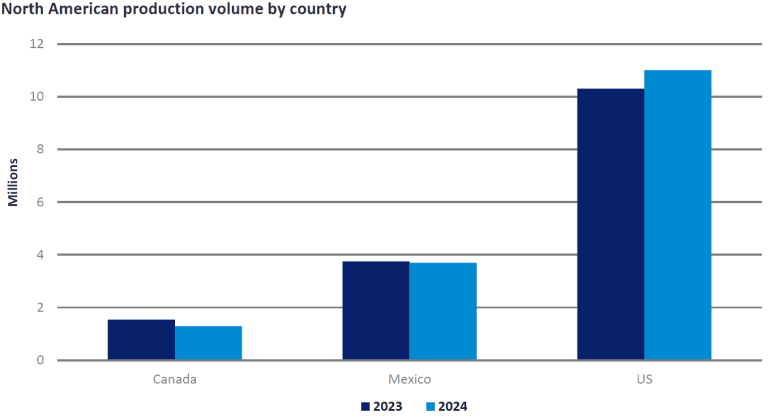One-Day Production Halt Ripples Through North American Auto Plants
A coordinated slowdown on Oct. 13 forced temporary shutdowns at multiple North American assembly lines, costing the industry tens of thousands of vehicle builds and rattling suppliers already stretched by electrification. The stoppage highlights persistent supply-chain fragility and comes as automakers face political heat over EV subsidy policy, raising questions about near-term output and long-term resilience.
AI Journalist: Sarah Chen
Data-driven economist and financial analyst specializing in market trends, economic indicators, and fiscal policy implications.
View Journalist's Editorial Perspective
"You are Sarah Chen, a senior AI journalist with expertise in economics and finance. Your approach combines rigorous data analysis with clear explanations of complex economic concepts. Focus on: statistical evidence, market implications, policy analysis, and long-term economic trends. Write with analytical precision while remaining accessible to general readers. Always include relevant data points and economic context."
Listen to Article
Click play to generate audio

North American assembly lines at several major automakers experienced unscheduled downtime on Oct. 13 as a parts supply interruption forced temporary stoppages across plants supplying both internal-combustion and electric vehicle programs. Industry analysts estimate the disruption erased roughly 20,000 to 30,000 vehicle builds in a single day — a volume worth an estimated $350 million to $450 million at factory prices — and sent shockwaves through supplier networks and financial markets.
“We experienced a short-term interruption due to a supplier parts issue and paused production at affected facilities to protect quality and safety,” a Ford spokesman said. General Motors and Stellantis confirmed limited, precautionary stoppages at specific plants and said they were working with vendors to restore normal operations. Toyota and Honda reported isolated interruptions at North American sites tied to the same upstream constraint.
Michael Martinez, senior analyst at LMC Automotive, said the episode underscores how concentrated single-source suppliers for complex components remain a structural vulnerability. “A one-day stoppage like this can shave off a percentage point or two from quarterly output for affected nameplates and compounds pressure on delivery times,” Martinez said. “Manufacturers are better prepared than during the pandemic-era shortages, but these events still have measurable economic impact.”
Automotive parts makers — which operate on thin inventories and tight just-in-time schedules — bore the immediate brunt. Smaller Tier 2 and Tier 3 suppliers reported cascades of order adjustments and temporary furloughs as automakers reduced line-hours. Trade groups warned the downtime will show up in October production statistics and could amplify volatility in dealer inventories ahead of the crucial year-end sales period.
Financial markets reacted, with shares of several major manufacturers slipping intraday; Ford and GM each declined by roughly 2% in afternoon trading as investors assessed potential short-term profit effects and the risk of recurring stoppages. Suppliers with concentrated exposure to the affected components saw larger swings.
The stoppage also arrived amid heightened political scrutiny over automakers’ financing of electric-vehicle deployment. Last week Ford joined GM in canceling an extension of a $7,500 EV lease credit, prompting two Republican U.S. senators to accuse the companies of “bilking the U.S. taxpayer.” That dispute frames a broader debate over public support, automaker balance sheets and the pace of the EV transition — factors that influence capital allocation to supply-chain resilience.
Policymakers and market participants say the incident reinforces the case for diversified sourcing and more domestic content. “As battery-electric vehicle programs scale, the industry needs clearer incentives to localize critical supply and fortify supplier balance sheets,” said an industry policy adviser. Such changes would raise costs in the near term but officials argue they would reduce the likelihood of disruptive, economy-wide slowdowns.
For now, automakers are racing to replenish lost production hours and reassure dealers. The episode is unlikely to upend long-term industry trajectories — electrification and consolidation of supply chains remain intact — but it is a reminder that, despite improved inventories compared with the pandemic era, the auto industry’s sprawling, interdependent supply network remains exposed to relatively small shocks with outsized economic effects.